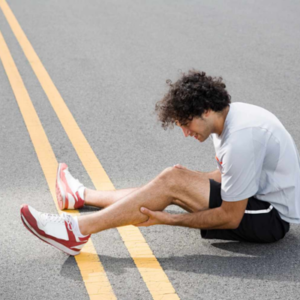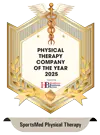Possibly the most common of knee injures is a ligament tear or strain. The knee has four main ligaments – Anterior Cruciate Ligament (ACL), Posterior Cruciate Ligament (PCL), Medial Collateral Ligament (MCL), and Lateral Collateral Ligament (LCL). These ligaments provide stability for the knee joint and help keep its bones in place.
Injuries to ligaments, sprains, and are categorized as follows: 
- Grade 1 – Little damage, mostly due to being over stretched. Still has ability to provide stability.
- Grade 2 – Overstretched and partially torn ligament.
- Grade 3 – Complete tear of the ligament and it is no longer able to provide stability.
In this article we will cover the LCL, a collateral ligament, and the effect an injury has on the knee joint. There are two collateral ligaments – Medial Collateral Ligament (MCL) and Lateral Collateral Ligament (LCL). These ligaments provide lateral stability for the knee and prevent valgus (inward collapse) or varus (outward bowing). The LCL is on the outside connecting the femur to the fibula (calf bone). The MCL is located on the inside of the knee and connects the femur (thighbone) to the tibia (shinbone).
LCL Injury
The LCL is usually injured as a result of an internal blow to the knee that causes it to bow out (varus). These types of blows are not common in day to day life but can be in contact sports such as football or rugby. The resulting stretch of the LCL and can strain or tear it. Commonly an LCL strain is joined by and ACL or PCL one as well.
In need of LCL Injury Rehabilitation? Schedule an Appointment Today!
If you have any questions, or want a consultation with a professional, feel free to call, or schedule an appointment online at any of our Bergen County or Passaic County offices in New Jersey. Choose from Glen Rock, Franklin Lakes, Fair Lawn, Ho-ho-kus/Ridgewood, and/or Clifton – we make it possible for you to visit any of our offices at your convenience.
Symptoms of LCL Injury
- Pain
- Stiffness
- Swelling
- Tenderness on inside of knee
- Difficulty in certain ranges of motion (ROM)
- Unstable Knee
- Trouble with weight bearing
Treatment
Depending on the grade of the strain, LCL treatment may require the use of a brace or crutches until weight can be placed on the leg. It is important to note that the LCL does not heal as well as the MCL and grade 3 tears may require arthroscopic surgery.
Common Exercises:
Straight Leg Raises
[youtubeVideo id=”vU185f-zfTM” height=”250″ /]
Glute Bridge/Hamstring Curl
[youtubeVideo id=”fS09PGk0hAo?t=2m52s” height=”250″ /]
Monster Walks
[youtubeVideo id=”aeB550DDOjg” height=”250″ /]
Leg Press (More Advanced)
[youtubeVideo id=”m-Z8esB2A5U” height=”250″ /]
NOTE: Always do exercises in the ROM that does not cause pain. Seek the help a physical therapist(like us) to help you determine how much to do.
Do you, or someone you know need LCL Injury rehabilitation? We can help you with a simple consultation.



